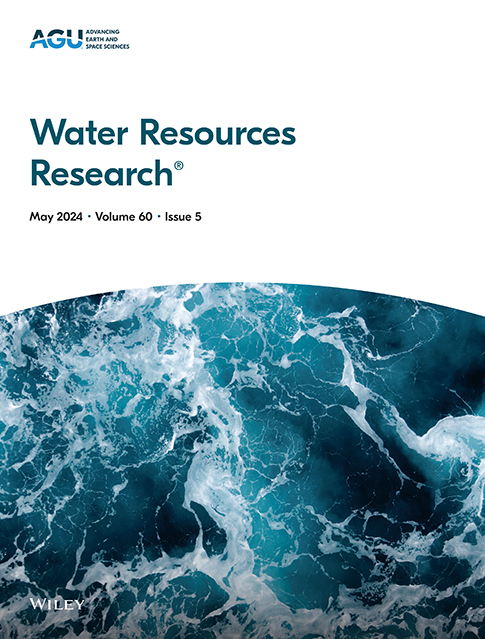A Hybrid Model Coupling Data and Hydraulic Transient Laws for Water Distribution Systems
IF 4.6
1区 地球科学
Q2 ENVIRONMENTAL SCIENCES
引用次数: 0
Abstract
The physics-informed neural network (PINN) method has been applied to solve water hammer equations in pipeline systems due to its ability of seamlessly integrate measurement data with conservation laws, offering advantages over traditional numerical method. However, existing PINN approaches require multiple neural networks to construct composite models for complex water distribution systems (WDS). This situation treats nodal information as boundary condition or labeled data during training, leading to a weaker robustness and a high demand for data. To address these issues, a hybrid water hammer model based on eXtended Physics-Informed Neural Networks for WDS (WDS-XPINN) is developed in this study. Unlike the standard PINN, WDS-XPINN incorporates the nodal mechanistic model directly into the loss function, enabling to synchronously train a unified neural network jointly through sparse augmented measurement data for pipeline system. Additionally, an adaptive weights method is introduced to improve model robustness by balancing the contributions of flowrates and pressures. The proposed WDS-XPINN is evaluated in two case studies: a series pipeline system with different operational events and noise perturbation, as well as a topological structure with looped and branched pipe. According to the simulation results and uncertainty analysis, the WDS-XPINN model demonstrates its excellent capacity of modeling fluid transient accurately in pipeline system, even without exact operational conditions or true pipe parameters.求助全文
约1分钟内获得全文
求助全文
来源期刊

Water Resources Research
环境科学-湖沼学
CiteScore
8.80
自引率
13.00%
发文量
599
审稿时长
3.5 months
期刊介绍:
Water Resources Research (WRR) is an interdisciplinary journal that focuses on hydrology and water resources. It publishes original research in the natural and social sciences of water. It emphasizes the role of water in the Earth system, including physical, chemical, biological, and ecological processes in water resources research and management, including social, policy, and public health implications. It encompasses observational, experimental, theoretical, analytical, numerical, and data-driven approaches that advance the science of water and its management. Submissions are evaluated for their novelty, accuracy, significance, and broader implications of the findings.
 求助内容:
求助内容: 应助结果提醒方式:
应助结果提醒方式:


